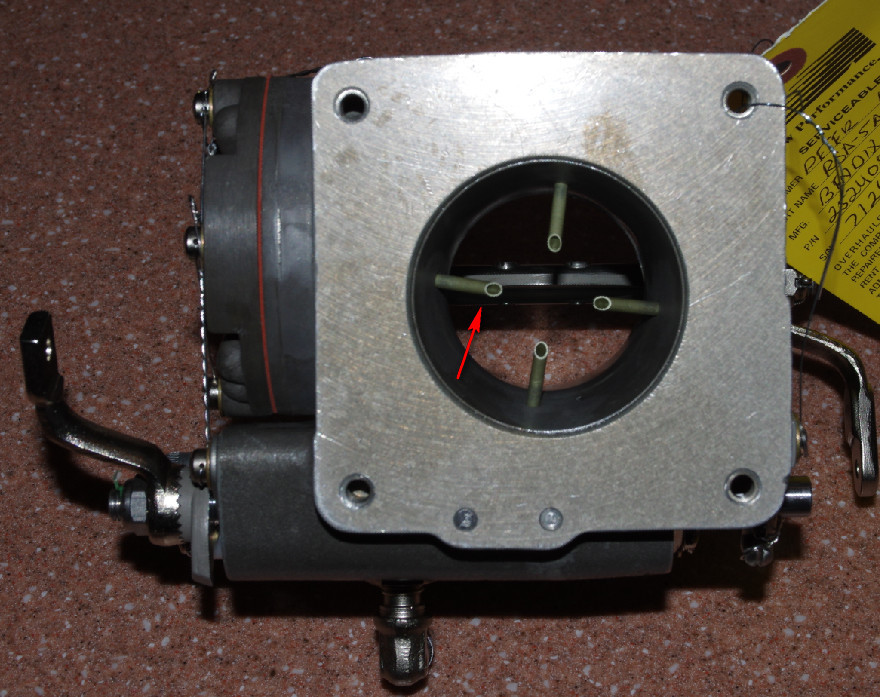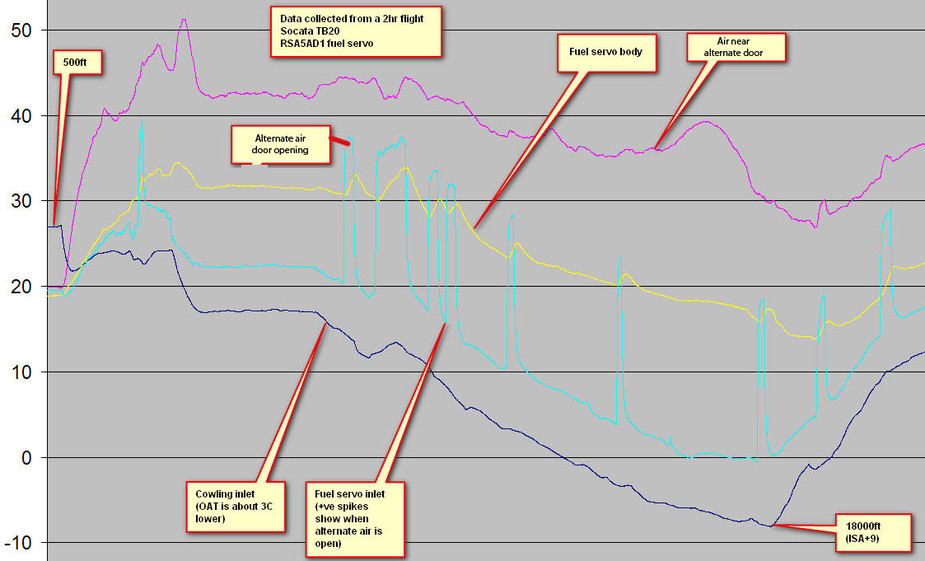Peter,
In the Malibu, if you have opened the alt air door during flight the general recommendation is to not close it until after landing, precisely because of the risk of ice forming behind the filter. I’m a bit uncomfortable with that because of the risk of ingesting bad stuff on the runway or forgetting to close it. So if I spend 10 minutes above +5 outside of cloud I take the risk and close it.
On the use of alt air, I must say I’m a bit surprised: does your POH really “recommends” it in potential icing conditions? More likely, it says it must be used, and if so, why don’t you?
On the lack of reporting of such incidents, let’s not forget another potential cause of under-reporting: fatal outcome followed by inconclusive investigation (since the ice has melted by the time the AAIB arrives on site).
The reason I didn’t use it is because -15C is not what I would call “icing conditions”. You will not get airframe ice in -15C – in any stratified cloud.
The reason you still do get icing in the fuel servo is because of the temp rise (from -15C to -5C) in the air duct. And as we both know, -5C is a prime condition for structural icing. This is the aspect which I think has never before been documented or proven. Well, now it is proven…
Also if I was flying at an OAT of C to -10C (or so) I would be using prop TKS which IMHO offers full protection from the air duct icing (on the TB20).
I am still waiting for the full flight data and then I will post it.
Very true about the accidents… Actually I recall a PA46 coming down near Libourne LFDI c. 2011/2012, following an engine stoppage at ~ FL250. He glided all the way down and the engine never restarted but there was snow on the ground so it would have probably never thawed. I don’t know any details. Maybe there is a BEA report out there and if nothing was found it was probably fuel system icing. The plane was a writeoff.
Peter wrote:
but the thing which was confusing me, and continues to do so, is: where will the water go when you warm up the air and then cool it down again, without having somewhere to drain off the (liquid) water?
If you cool the air back down to the original temperature, the water vapor recondenses and you end up with (essentially) the same liquid/ice content as you had originally. The total water mass is conserved. By varying the temperature, you can control how it is partitioned between phases.
P.S.: In my calculation of the relative humidity, I neglected the increase in water vapor due to the evaporation of the liquid water. That’s because the ratio of liquid water to water vapor is typically around a 10% effect. (Liquid water content in non-CB clouds is a few tenths of a g/m^3, water vapor content is a few g/m^3.)
I received the collected data.

My comments, starting from the top, are
It would be fun to measure the temperature of the little airflow sensing tubes in the fuel servo

but that would be tricky to arrange (tiny thermocouples or thermistors) and not easy to do safely because if the sensor came off and got sucked in…
Anyway, you can see how easily the fuel servo inlet can get to -5C which will produce icing of the four little tubes.
Has compression heating been correlated to airspeed and altitude?
Also just to put the Cirrus “fuel servo icing” systemic problem to rest once and for all, CMI engines do not use a venturi to schedule fuel flow in relation to airflow…
Here is the same graph with the RHS chopped off, so it is clearer

Has compression heating been correlated to airspeed and altitude?
Well, if it isn’t thermodynamic heating, what could it be?
I should add that I tested the icing theory with respect to propeller TKS on the flight on Monday (Malmo-Shoreham) at about -15C for about half an hour. No alternate air, just TKS, and exercising the alternate air door periodically. And watching the EGTs extremely carefully…
No problem whatever.
So TKS does give you protection.
Alternate air would do the job also (see above data) but you lose a lot of power. The ceiling (once in cruise) probably drops 1000ft, and the climb to the ceiling would be significantly impacted.
Peter wrote:
Well, if it isn’t thermodynamic heating, what could it be?
What exactly do you mean by that? (thermodynamic heating)
Consider you are flying at 150 knots (approx 75 m/s) at 2000m at 0 degC with denisty of 1 and pressure of 80 kPa. The dynamic pressure is 1/2*rho*V² = 2813 Pa. This means P2/P1 = 1.035. Then for an isentropic process the T2/T1 = (P2/P1)^(1-1/gamma) = 1.0099 ((1-1/gamma) = 0.286). Then T2 = 1.0099*273 = 275.7 The heating of the air is 2.7 degrees due to compression. This means the temperature at the stagnation point is 2.7 degrees higher than ambient, thus the maximum possible increase in temperature in an induction system due to compression is 2.7 degrees (at those conditions), probably less. Anything more than that is due to conduction from heated parts or errors in measurements. Compressibility typically only starts to play a part above MACH 0.3 or so. 150 knots is MACH 0.22 or so.
The problem with a theory is that experimental results can contradict it 
Reality is real…
 The problem with experimental results is they are wrong (plain measurement error due to poor equipment, lack of calibration and so on), taken out of context, or what usually happens; they are not measuring what you think they are measuring due to all sorts of likely and unlikely things.
The problem with experimental results is they are wrong (plain measurement error due to poor equipment, lack of calibration and so on), taken out of context, or what usually happens; they are not measuring what you think they are measuring due to all sorts of likely and unlikely things.